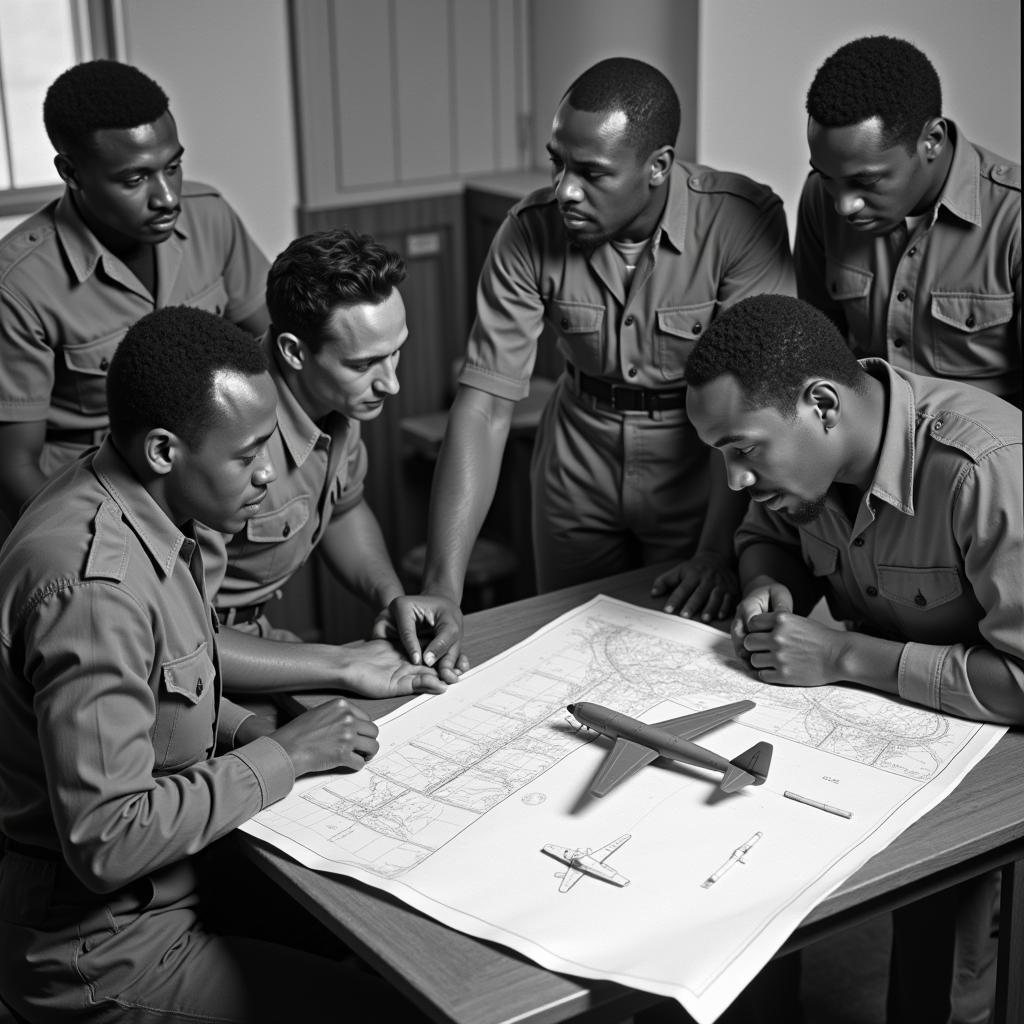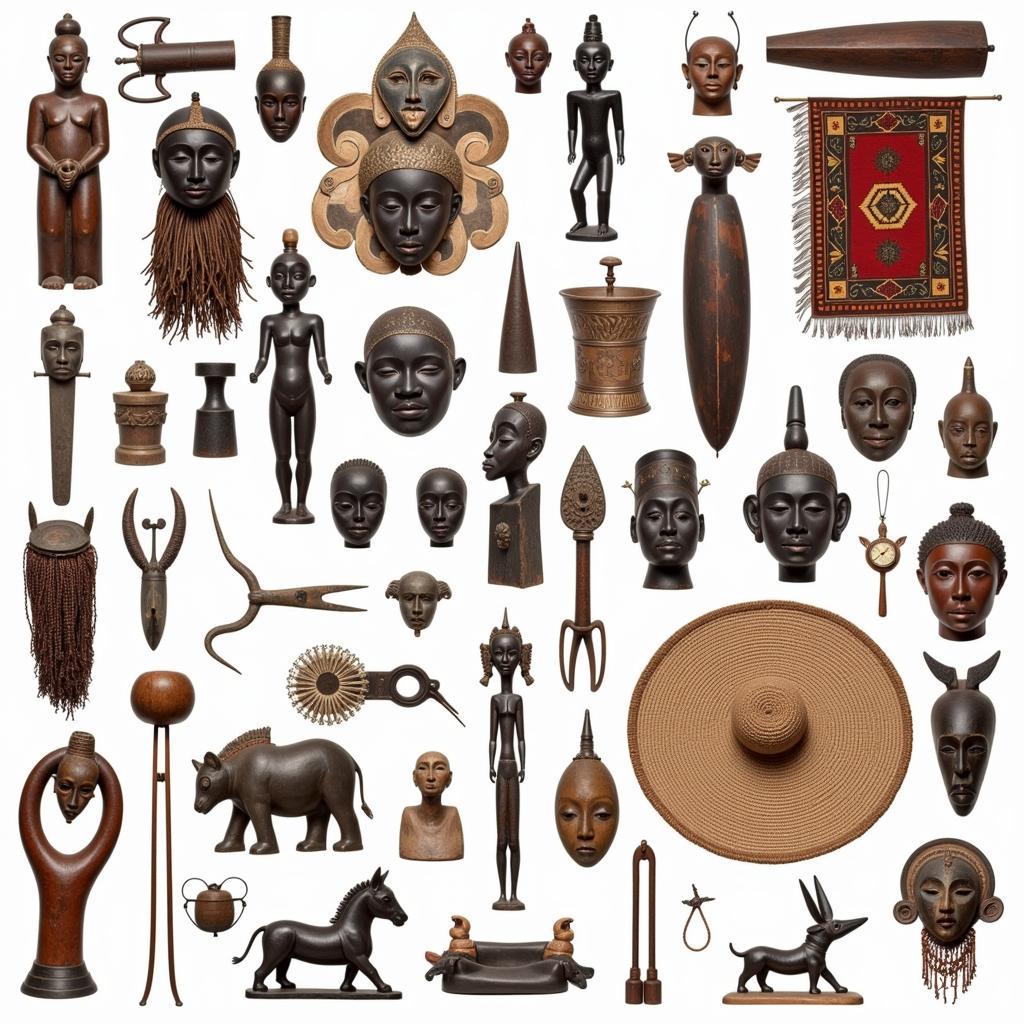The African American Tuskegee Airmen: Breaking Barriers in the Skies
The African American Tuskegee Airmen were a group of primarily Black military pilots and airmen who fought in World War II. They were a part of an experiment to see if Black men could be trained to fly and maintain sophisticated aircraft, overcoming the widespread prejudice and segregation of the time. Their bravery and skill in the face of adversity not only helped secure Allied victory but also challenged racial stereotypes and paved the way for future generations of Black aviators.
Overcoming Obstacles: The Making of the Tuskegee Airmen
The journey of the Tuskegee Airmen began long before World War II. In the 1930s, the idea of Black pilots in the United States military was almost unthinkable. The U.S. Army Air Corps was segregated, and many white officials believed that Black men lacked the intelligence, courage, and skill necessary to be successful combat pilots.
 Tuskegee Airmen Training
Tuskegee Airmen Training
However, pressure from civil rights groups and the need for more pilots as World War II loomed forced a change in policy. In 1941, the U.S. government finally authorized the training of Black pilots, establishing a segregated unit at the Tuskegee Army Air Field in Alabama. This program became known as the Tuskegee Experiment.
The training at Tuskegee was grueling. The aspiring airmen faced the same demanding curriculum as their white counterparts, but they also had to contend with racism and discrimination from some instructors and officers. Despite these challenges, the Tuskegee Airmen persevered, demonstrating exceptional skill and determination.
A Legacy of Valor: The Tuskegee Airmen in Combat
The Tuskegee Airmen’s combat record speaks for itself. They flew over 15,000 sorties in North Africa and Europe, escorting bombers, engaging in aerial combat, and conducting ground attack missions. They earned over 150 Distinguished Flying Crosses, along with numerous other commendations for their bravery and service.
The 332nd Fighter Group, which included the famed 99th Fighter Squadron, became known as the “Red Tails” for the distinctive red paint on the tails of their P-47 Thunderbolts and later, their P-51 Mustangs. Their reputation for skill and courage preceded them, and bomber crews specifically requested the Red Tails for escort missions. The Tuskegee Airmen earned the respect of their fellow soldiers, proving their mettle in the skies above Europe.
Their success in combat was not without sacrifice. Many Tuskegee Airmen were killed in action or became prisoners of war. Yet, their bravery and dedication never wavered, serving as a beacon of hope for African Americans back home who were still fighting for equal rights.
Breaking Barriers and Inspiring Change
The legacy of the Tuskegee Airmen extends far beyond their military service. They challenged deeply ingrained racial prejudice and segregation within the U.S. military and society as a whole. Their accomplishments proved that given the opportunity, Black Americans were just as capable as anyone else in serving their country with distinction.
Their story has inspired countless others, both within and outside of the military. The Tuskegee Airmen became a powerful symbol of the struggle for civil rights and a testament to the human spirit’s ability to overcome adversity.
Frequently Asked Questions about the Tuskegee Airmen
1. How many Tuskegee Airmen were there?
Nearly 1,000 pilots graduated from the Tuskegee training program, and approximately 450 saw combat during World War II. Thousands more served as ground crew, instructors, nurses, and support personnel, all playing vital roles in the success of the Tuskegee Airmen.
2. What was the Red Tail Project?
The term “Red Tails” specifically refers to the 332nd Fighter Group, but it has come to symbolize all Tuskegee Airmen. The red paint on their aircraft tails was a visual identifier, but it also became a symbol of their skill and courage, leading to bomber crews requesting them for escort missions.
3. Did the Tuskegee Airmen face discrimination after the war?
Yes, despite their heroic service, many Tuskegee Airmen faced continued discrimination and segregation upon returning home. However, their fight for equality continued, and they played a significant role in the Civil Rights Movement, paving the way for integration in the U.S. Armed Forces and beyond.
4. What is the legacy of the Tuskegee Airmen today?
The Tuskegee Airmen’s legacy endures as a testament to the power of perseverance, courage, and the fight for equality. Their story continues to inspire generations of Americans, reminding us that barriers are meant to be broken, and that dreams have no color lines.
Seeking further insight?
Explore more about the bravery and resilience of african american soldiers in ww2 or delve deeper into the historical context of african americans in world war ii.
The story of the Tuskegee Airmen is one of courage, determination, and the pursuit of equality. They soared above prejudice and discrimination, securing their place in history as American heroes. Their legacy continues to inspire us to strive for a world where everyone has the opportunity to reach their full potential, regardless of race, background, or circumstance.




